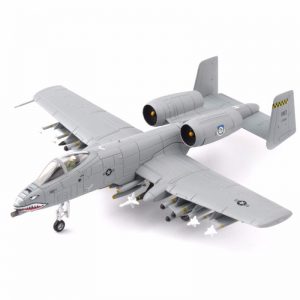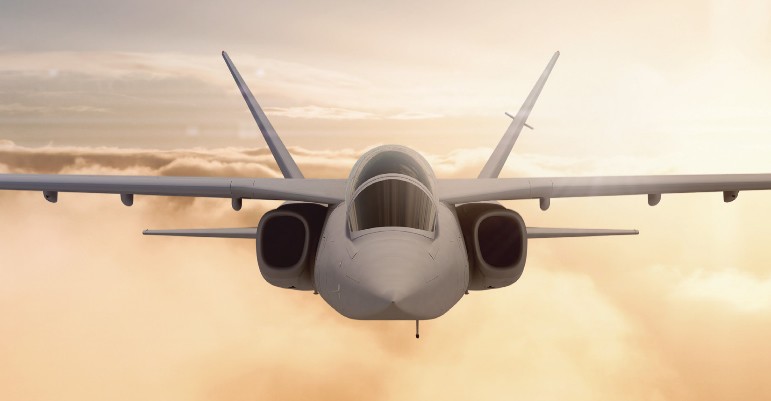Take an up-close and detailed walkaround tour of the US Air Force Fairchild Republic A-10 Thunderbolt II aircraft, commonly referred to by the nickname “Warthog”, “Hog” or “Hawg”.
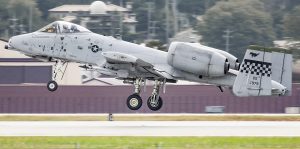
The U.S. Air Force A-10C Thunderbolt II demonstration team received a new jet, serial 80-0275, in September 2019, in anticipation of the 2020 airshow season. The aircraft was given a new paint scheme inspired by the P47 Thunderbolt and P51 Mustangs of World War II. The 355th Equipment Maintenance Squadron, Davis-Monthan Air Force Base, Arizona was responsible for the repaint work on the aircraft.
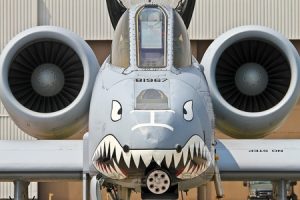
The impressive tour involves a detailed description of various parts, systems and sensors. In particular, look out for details about the iconic GAU-8/A Avenger 30mm hydraulic seven-barrel Gatling gun and the cockpit.
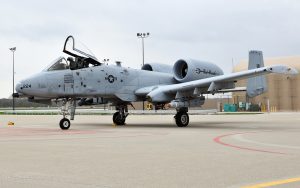
An interesting fact is the aircraft is not equipped with slats in the traditional sense, as they do not increase lift force nor assist the pilot to land slower during approach. The special slats on this aircraft are designed to smooth the airflow over the wing and prevent stalling of the aircraft during high angle of attack manoeuvres. The slats also divert recoil smoke from the gun underneath the wing and down the fuselage to prevent suffocation of the engine (the gas does not contain oxygen) when the gun is fired.
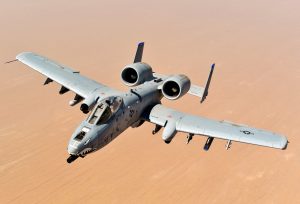
In fact, the airframe is built around the gun, even the offset nose and landing gear. The weight of the rounds and their shells (4000 pounds for 1,150 30 mm bullets) needs to be considered to maintain the position of center of gravity of the aircraft. In the absence of the rounds aboard the aircraft, the nose will have to be filled with ballast to balance the aircraft.
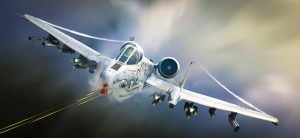
The gun is surrounded by titanium so that if it blows up accidentally, the shrapnel does not penetrate the cockpit located just above it.

There are two ways of operating the gun: training schedule and combat schedule. In the training schedule, the gun does not fire more than 100 rounds/minute in order to save the life of the barrel. In combat schedule, the gun can fire more than 100 rounds/minute, but this will reduce the lifespan of the barrels, and call for a replacement sooner. The gun is extremely accurate having a 5-mil precision at around 20 rounds/ second.
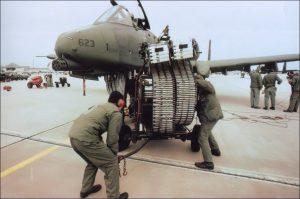
The nose area features usual damage where the “boomer” inserts the “flying boom” of the refuelling tanker, a KC-10 or a KC-135. Warthogs require frequent refuelling during normal sorties and when deployed. The fuselage skin in that area is constructed of sheet metal, and repeated impacts tear apart the skin creating holes in the upper nose area. These dents don’t negatively affect the aircraft characteristics during flight and fight, as the aircraft creates a lot of drag as it is.

The Thunderbolt II’s main landing gear remains partly exposed below the fuselage, an extremely handy feature if the aircraft has to perform a belly landing. The wheels that protrude from their nacelles can absorb impact with the runway while providing braking force, affording pilot control of the aircraft through differential use of brakes. This reduces the risk of fire and damage to the fuselage. An A-10 that performs a belly landing is able to return to flight in around a week.
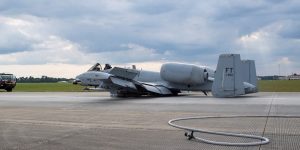
The cockpit consists of the ACES II ejection seat and consoles including U/VHF/FM radios, emergency systems, backup speed brakes, trim actuators, buttons for the master arm, gun, laser designator, targeting pod and the Radar Warning Receiver.
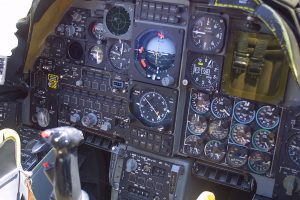
Depending on the aircraft’s payload, the A-10 takes off at 135-145 knots, rotation at 10 knots prior to the calculated rotation speed. Then with the gear flap, the A-10 climbs at 200 knots. The landing speed is around 135-156 knots.
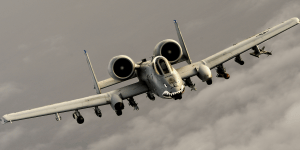
The multifunctional colour display is surrounded by 20 buttons to display the map, datalink, weapons status, etc.
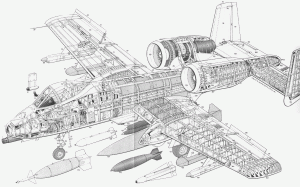
The A-10 has received many digital upgrades and modern technology to systems and weapons since its introduction to the 355th Tactical Training Wing, Davis-Monthan, Arizona.

The A-10 and OA-10C have been updated to the A-10C with a new flight computer, and new glass display and controls via The Precision Engagement Modification Program. Further upgrades include the Joint Direct Attack Munition (JDAM) and Remotely Operated Video Enhancer Receiver (ROVER) to provide sensor data to ground personnel. In 2011, the A-10 received a Hand-on-Throttle-and-Stick Control which combines the F-16’s stick with the F-15’s throttle controls.
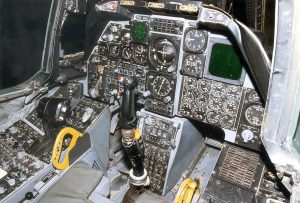
On the bottom right side of the front panel, the engine and APU gauges are present. The right-hand console houses the ECM pod, chaff and flare programming, Master Caution panels, Central Data Unit where steering points, navigation and target data are stored by means of a card.

Watch the detailed walkaround tour in the video below
According to 2021 Air Force budget documents, the U.S. Air Force will retire 44 Thunderbolt IIs from its aircraft inventory. These aircraft are the oldest and least-ready units in order to modernize a combat-capable fleet of 218 A-10’s across seven squadrons.
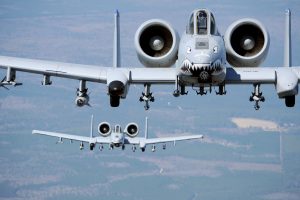
The aircraft continues deployment across the world, supporting U.S. Air Force operations in the Middle East and Afghanistan, also taking part in U.S. Air Force and international exercise missions.
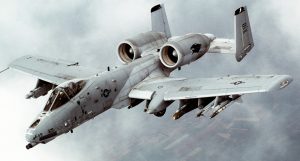
According to a report by Military.com, the U.S. Air Force is slated to upgrade its fleet of A-10 for operation until the late 2030s as part of the A-10 Common Fleet Initiative. Upgrades come after a re-winging program for the installation of Boeing built wings on 173 A-10s, 162 of which were installed by the 571st Aircraft Maintenance Squadron, Ogden Air Logistics Complex, Hill Air Force Base and the remaining 11 A-10s were re-winged at Osan Air Base, South Korea.
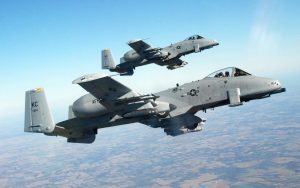
The upgraded wings will serve up to 10,000 flight hours without requiring inspection. The U.S. Air Force has awarded Boeing a second contract, worth U.S. $999 million for 112 new wing assemblies, thus completing the re-winging of all A-10s in their inventory.
